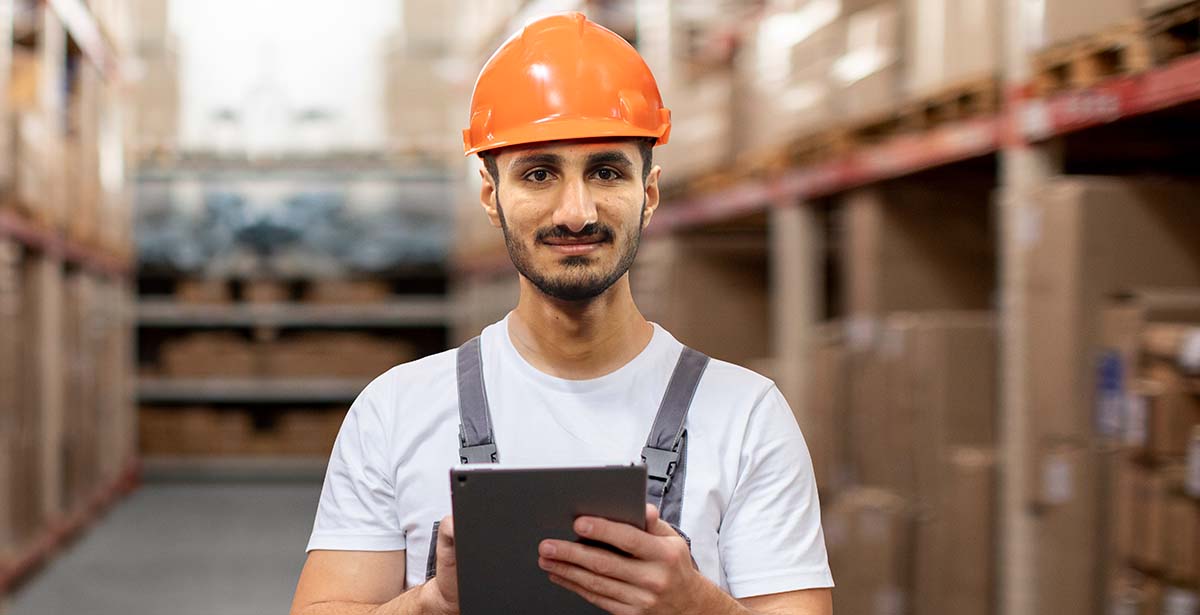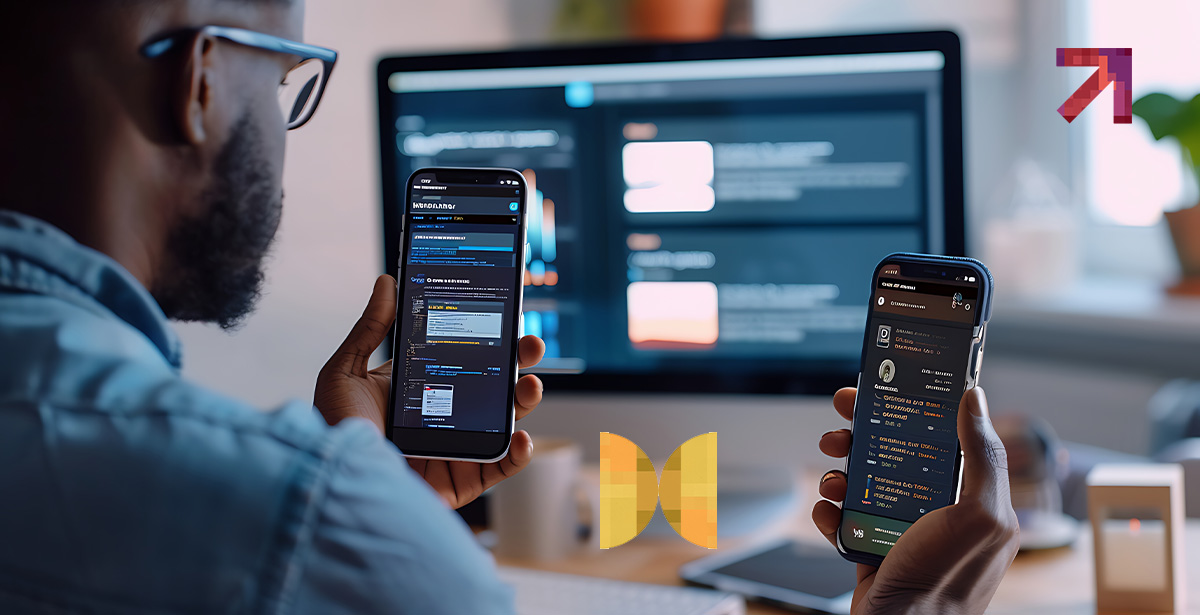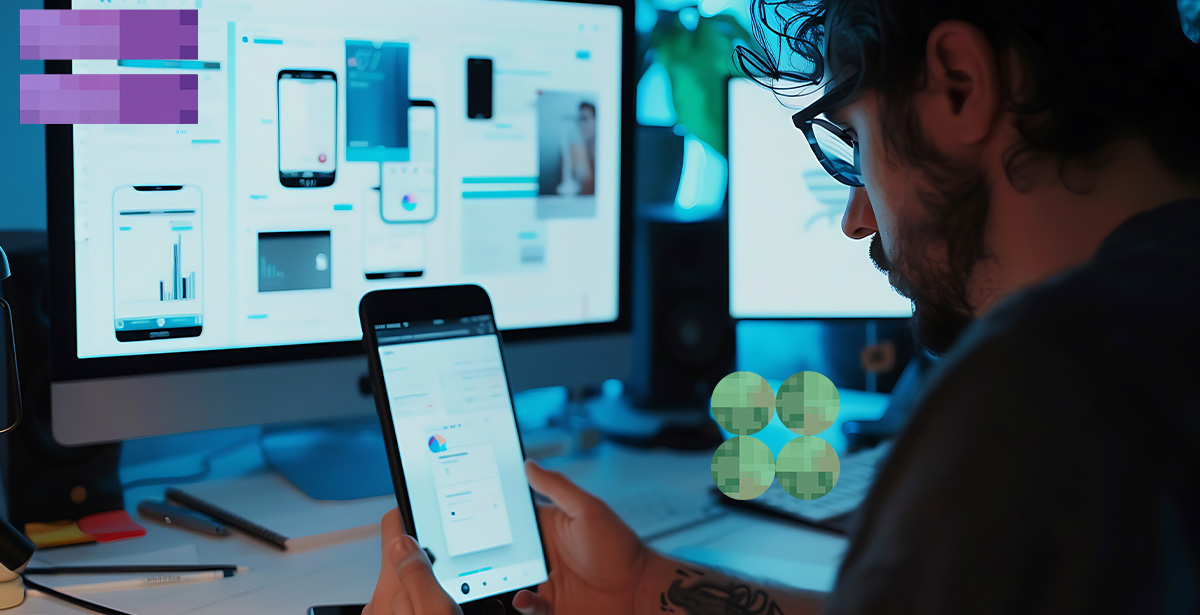Logistics App Development – Your Guide to Every Single Detail

As the global logistics industry advances at an unstoppable pace, logistics app development is on the rise.
That’s because logistics apps are reliable solutions that ensure more transparency into deliveries and workflows. Besides, they help overcome many challenges companies face while ensuring regulatory compliance.
If you’re interested in creating a logistics app – be it for your business or to enter the world of appreneurship – read on.
Why Invest in Logistics App Development
Like any business savvy individual, you need to know what you’re getting into before starting your next project. The good news is logistics app development benefits both businesses and their clients and customers.
Here are some of many benefits you can expect to gain.
Transparency into Driver and Freight Tracking
Effective tracking ensures timely delivery, an aspect that’s essential for logistics businesses. Apps can help in this regard, providing real-time information about shipments and drivers’ current location.
Drivers too benefit from accurate tracking during emergencies. If ever in one, companies can dispatch rescue teams to their exact location.
Effective Fleet Management
Proper fleet management can improve productivity and efficiency levels at logistics businesses. Employees can keep track of vehicles and the routes they take, giving the company more control over the fleet.
Moreover, decision makers get to make informed decisions when needed.
You can expect drivers too to be more productive as you watch their movements via dashboards.
Better Warehouse Management
Connecting the app to your warehouse management system offers massive benefits in the form of efficiency and productivity. For instance, the app can help users determine correct stockpiling areas.
No Paperwork Due to Automation
The administrative tasks at a logistics company can easily consume a lot of paper – that is if you don’t have an app for them.
Logistics app development allows you to automate several workflows, reduce desk work, and much more. Therefore, the app can spare everyone’s time while enhancing their productivity.
Moreover, as data is digitalized and safer from loss, its safety and privacy can be easier.
Automation can also help logistics companies minimize the chance of human error and its consequences.
Lower Costs
Everything you have read so far will eventually help businesses safe time and money. Especially as logistics apps integrate with other systems across the organization.
This, in turn, allows decision makers to find new, innovative ways to accelerate their growth.
Types of Logistics Apps You Can Create
Now, before connecting with a logistics app development specialist, you should know the types of apps you can create. Basically, there are four types of apps out there –
- Fleet Management Apps – Businesses with larger fleets can benefit from fleet management apps. These track every aspect of trucks, including their location, condition, and inspection status. Therefore, businesses can remain on track to ensure their compliance with regulations.
- Tracking and Monitoring Apps – A simpler version of fleet management apps, tracking apps help track vehicles and relay their route information. Organizations can view journeys as well as find out about the condition of vehicles once they leave the facility.
- Warehouse Apps – This type of app benefits businesses that have their own warehouses. It’ll ensures that cargo goods heading to the warehouse are delivered on time to a pre-determined location.
- On-Demand Logistics App – Another great logistics app development idea is on-demand apps. These allow users to immediately receive or schedule services from a logistics company.
Features to Include in Your Logistics App
Now that you have the type of app you wish to create, let’s talk about the great features you should consider adding to it.
Most apps, including that from logistics leaders like DHL, distribute features across three panels – user panel, driver panel, and admin panel. Here are the bare basics in each of these.
User Panel
- Registration – This is a must-have for any app, including a logistics app. Allow users to either create a new account from scratch or link existing social media accounts.
- Vehicle Selection – This feature enables users to select the vehicle they need, be it a van or a container truck.
- Booking Management – Users can quickly schedule or book your services whenever and wherever.
- Multiple Payment Methods – Integrate multiple payment gateways such as cards and blockchain wallets. This added flexibility will encourage people to use your app more.
- Shipment Tracking – Almost all logistics apps include this feature, so you can’t afford not to include it.
- Real-Time Alerts – Push notifications can engage users by providing important information in real-time.
- Estimate Charges – Today’s consumers need to know beforehand how much they need to pay for services. So, include a fare calculator to help them make up their minds.
Driver Panel
- Requests Management – With this feature, dispatchers can accept or reject any requests based on their preferences. This will increase employee satisfaction and reduce turnover which is currently estimated at 31% in the industry.
- Availability Status – Let drivers toggle between their availability and unavailability to give them more freedom.
- Consignment and Shipping Details – Dispatchers should get insights of the consignment to be delivered. That way, they can be careful while handling it. Similarly, allow them to view freight details such as weight of goods and toll charges.
- Navigation – Integrating the map functionality enables dispatchers to choose the best route to fulfil deliveries. So, discuss adding this feature with your logistics app development team.
Admin Panel
- Dashboard – This will give people working at the back-end all the critical information related to users and drivers. And all in real time.
- Vehicle Management – With this feature, employees can quickly add new vehicles into the system and update existing ones.
- Invoice Management – Managing invoices and payments is a must-have in your logistics app. It enables admin panel users to generate/update invoices, manage payments, and analyze transactions.
- Driver Monitoring – This feature enables the management and task assignment to dispatchers. Moreover, admins can monitor important details such as on-road time and pending requests.
If you really wish to get more ROI on your logistics app development, you can go beyond the above features.
For instance, you can allow users to request quotes, chat with representatives in-app, and provide multi-lingual support.
3 Important FAQs on Logistics App Development
You probably have a few more questions about logistics app development before you delve into it. Here are three FAQs Team DPL tend to get, along with their answers.
1) What’s the Cost of Logistics App Development?
On average, building a logistics app will cost you around $22,500. This amount, however, can go as low as $10,000 or as high as $20,000.
The cost you’re billed is determined by a number of factors such as –
- Choices related to design, frameworks, tools, and technologies
- Choice of tech stack
- Type of application (on-demand will cost the most)
- Choice of platform for your app
- Size of the logistics app development team
- Location of the service provider
Just remember that the ROI of your app will definitely be worthwhile. So, don’t cut too many corners.
2) How Long Will It Take to Develop a Logistics App?
The right answer for this question is “depends.” Apps typically take around 300 hours to build. The least time it takes is 133 hours, but the duration can exceed 450 hours.
Your development partner will help you estimate an accurate timeline according to the app’s complexity. Just remember that the more custom designs and non-standard features you add, the longer the app will take.
3) What Are the Stages of Logistics App Development?
Whether you’re new to app development or have some experience, consider the following steps to streamline the process.
- Select the App’s Type – Do your research to find out which type of app can benefit your company/future client. This will ensure you create an app with high demand.
- Get Quotes from Developers – Start shopping for your development partner. With a quick search online, you can create a list of developers and companies to choose from. Then, contact them to learn about what they can do for you.
- Explain Your Business Idea for a Rough Estimate – Once you shortlist a few developers, explain your idea to them. In the case of companies, business analysts will determine the cost of your app and get back to you. You can also request timeframes, team composition, and other details.
- Launch the Inception Phase – Over the span of one to three months, your chosen developer(s) will collect information from you to best understand your app’s purpose. For instance, they can ask about the app’s business logic, user interactions with the app, etc.
- Build the MVP – An Agile organization will emphasize the need for creating a minimum viable product (MVP). This is a version of the app that includes essential features. With your feedback, developers can further build and expand on this version until it’s the one you can launch.
- Market Your App – Don’t forget to publicize your new app. As an appreneur, this will get your potential clients excited. Meanwhile, if you’re a logistics company owner, this will show your innovative streak to users.
Ready to Start Working on YOUR Logistics App?
DPL’s custom software development team can help you transform your logistics app idea into a reality. Simply connect with us via the form below and let’s work together on your next multi-million idea.





